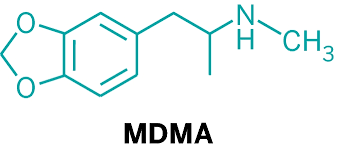Mainstream adoption
I was 19 rows back, dead center as Roger Waters played Comfortably Numb next to 80-foot Pink Floyd stage props. The MDMA had kicked in long ago, this is what Tony Robbins refers to as peak experience. It wasn’t my first or last MDMA trip, but it was one of the most memorable. But I would say around 60% of my MDMA trips ended up being away parties, people, and loud noises.

In my teens, I used it recreationally, and while irresponsible I don’t think it was all bad in retrospect. When I first heard of MDMA-assisted therapy it made sense to me immediately. I remember feeling these really intense connections with people who normally I would just walk by, like the dude selling timeshares on the Puerta Vallarta Malecon in Mexico. We didn’t need to have an 8-hour discussion about setting up a small business in Mexico, but we did, and while meaningless I think the mechanism would easily transfer to a therapeutic setting.
I have done my fair share of psychedelics, and while I think they all have a potential purpose in therapy, MDMA seems to have the least limitations. If psychedelics were NBA draft picks you would say MDMA has a high floor and a medium ceiling. The chances of being a total bust are pretty low, but you probably aren’t going to have that hero’s journey on MDMA.
Psilocybin on the other hand would have a lower floor and a higher ceiling. Meaning, for someone inexperienced with psychedelics, or who is in the wrong setting – things can go bad. Like, really bad. I have been there. Multiple times. It’s not fun. I feel like with MDMA it’s a lot easier to come back to homeostasis and realize what’s happening.
So why will MDMA likely become the go-to mainstream psychedelic for therapy? The science behind it is already strong, and likely to get stronger. Phase 3 trials on MDMA-assisted therapy have already been completed. One of the key findings of the study was MDMA’s positive effect on people with dissociative PTSD.
Phase 3 trials
The Phase 3 trials consisted of 131 participants that were recruited from 2018 to 2020, with the last visit conducted in August 2020. A total of 345 participants were assessed for eligibility, 131 were enrolled, 91 were confirmed for randomization, and 46 were randomized to MDMA and 44 to placebo. The trial treated patients with severe, chronic PTSD from any cause with an average duration of 14 years and replicated the results of Phase 2 trials with 67% of participants who received three MDMA-assisted therapy sessions no longer qualified for a PTSD diagnosis and 88% experienced a clinically meaningful reduction in symptoms.
Having this subtype of PTSD usually means the individual is partially or completely unable to verbalize their traumas. In therapy this is usually the first step before a lot of the bodywork, psychedelic therapy, EMDR, DBT, etc. happens. If a patient can’t get past this phase, all other therapy modalities become extremely difficult to work with.
Results are in for the MAPS phase 3 study of MDMA-assisted therapy for PTSD
There are two ways of looking at this breakthrough from a marketing perspective, you could say Ok well how big is the dissociative PTSD market? But I think that misses the bigger point. If MDMA is able to crack the hardest shell, the toughest to reach individual, that says a lot about the power of the drug and what it could potentially unlock for those who don’t have hard shells. I think the Johns Hopkins psilocybin studies have been an integral part of advancing the psychedelics industry. But, in many of their studies, they aren’t working with traumatized people like MAPS was in its MDMA studies. I think an MDMA vs. psilocybin study on people with PTSD would be really interesting to look at. Based on the data MAPS released, combined with my own knowledge and personal experience with both drugs I would put my money behind MDMA.
It seems logical to assume that most of the people who seek psychedelic-assisted therapy have already at least tried more traditional types of therapy. People who need long-term therapy, and who try out several different therapy modalities are usually not dealing with a mild or simple case of whatever their ailment is. I wouldn’t say these are hard cases, but, many people in this camp suffer from trauma. In the Body Keeps The Score Dr. Vanderkolk talks about PTSD as the result of trauma.
People who go for PTSD treatment will largely be working with their traumas either directly or indirectly as this is the birthplace so to say of PTSD.
Starter psychedelic
Based on my experiences and knowledge, for what it’s worth, I wouldn’t advise someone to take psilocybin as their first psychedelic experience. Mushrooms can be pretty overwhelming, even for seasoned vets. And sure, you could just give them a gram or a gram and a half and the likelihood of a bad experience is pretty low. But, I think MDMA provides a more logical introduction to psychedelics. I think after a few MDMA sessions something like psilocybin or LSD would be easier to get comfortable with.

It’s reported that 13% of people experience trauma, but, these types of numbers aren’t really all that important as they don’t factor in the individual’s experience. Two people can experience the same trauma in completely different ways.
Self-help authors like Wayne Dyer, although they mean well will say things like ‘perception is reality!’ ‘sticks and stones can break my bones, but words cannot hurt me’. The ‘good vibes only’ approach is really not a good method in addressing trauma.
Many people also don’t report their trauma, so that 13% number is likely a lot higher. Some traumatic experiences can happen where no abuse or violence occurs, like a parent leaving and never coming back.

